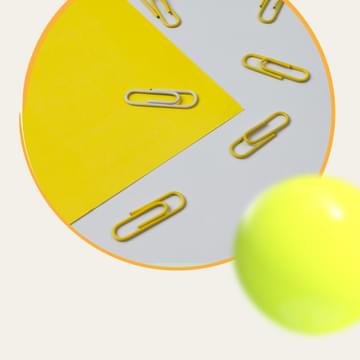Determining which concept or idea has the best chance of success requires skill. To understand what your consumers will buy, you should think about their needs, wants and challenges. And we all know that if a person likes a particular element in your product or design, they are more likely to choose you over the competition. So, if you want to improve the performance of your ideas, you should start assessing them in advance. That's why you should understand the definition of concept testing.
For some, the term concept testing might sound vague or too technical. However, it is not as complicated as you might think. Most companies around the world test ideas for their products and services. It helps them to know the current consumer and marketing trends. In fact, 95% of newly introduced products fail when they enter the market. That statistic only reinforces the idea that all concepts should be analyzed and evaluated thoroughly.
In this blog post, we’ll give you the full concept testing definition in marketing. We also touch on various use cases for examining ideas, and some key concept testing methods that you can use to create your first concept testing survey.
Develop an efficient concept testing questionnaire with Upsiide. To learn how Upsiide tests ideas, book a demo with our team.

Concept Testing Definition
Concept testing (also known as concept validation) is a process of assessing and evaluating ideas before they are introduced to the public. When you want to launch a new product, ad or offer, you should test it first with a sample group. If you examine your concepts, you will find out what your target audience likes or doesn't like.
As a marketing or insights professional, you can use this knowledge to predict the success of your idea. Testing your concepts helps you reduce the risk of losing money in case of failure and improves your chances to stand out from the competition.
Why do you need concept testing?
Knowing what your customer wants is a superpower. It’ll allow you to develop ideas that feed into their needs, which results in happy (and returning!) shoppers. It might be tempting to ignore concept testing, especially if you feel you already know everything there is to know about your consumers. But when you ask your audience what they think about your concept, you can find some surprising insights that might help you strengthen your chances of success.
There are many cases of companies skipping the concept testing process altogether. As a result, some of their products flopped miserably in the market. Some even became a point of mocking in the news. Therefore, researching the concept testing definition and learning whether your customers accept your idea is crucial.
Here is an example of when you might want to use concept testing:
Let's imagine that you have been hired as a new marketing manager at a food & beverage company. Sales for one of your products have been declining every quarter, and your team decides to design brand new packaging to drive conversions. But you want to find out if this design will perform well with your target audience. The process of concept testing can help you answer these questions:
What do my customers want to see on a package?
Which images and colors will attract their attention?
What types of messages or claims drive consumers to buy a product?
How can I make my packaging stand out from the competition?
Upsiide is the perfect place to answer those questions. In fact, we recently ran a concept testing study to find out what people think about sustainable on-pack claims. The study revealed valuable insights that will help you decide which claims make the most sense for you to display on your packaging.
So, now you’re familiar with the definition of concept testing. What do you need to begin the process?
An effective concept testing survey has been a handy tool for many marketing and product teams to get feedback from the consumers. There are many tools out there that allow you to get access to your specific segment and send them concept testing questionnaires.
You can either opt for the traditional concept testing solutions or check out modern survey tools that give you access to global audiences and test ideas in different formats. Upsiide is an example of one of these platforms, helping you decide which ideas will perform best in the market.
Concept Testing Use Cases
As you might have learned from the concept testing definition, there are many avenues you can take if you want to evaluate the validity of their ideas. Here are some traditional idea testing methods:
Product testing
Examining a new product is probably the most common area of concept and idea testing. Businesses can evaluate which aspects of a product or service their audiences prefer. For example, if you work in the food and CPG industries, product concept testing is a great way to discover new flavor ideas for your product.
Packaging testing
Packaging is the first thing that your customer sees when deciding whether or not to purchase your product. The process of evaluating concepts allows you to find out where your customers look when they see your package and what appeals to them.
Website and landing pages testing
Want to create a webpage with a strong user interface? Looking to increase sales with an appealing landing page? Concept testing is the perfect way to get feedback on the most appealing color schemes, fonts and styles for your website.
Logo testing
Logo testing is a great tool both for startups and companies looking to re-brand. It can help you get a sense of how your logo and mark will come across to consumers. With this type of concept testing, you can understand what design resonates best with your target audience and why.
Pricing and offer testing
Want to create a new pricing system? Curious to know which benefits incentivize your audience to choose your service? Then set up concept testing surveys about your offers to see what excites your audience most.
Ad and creative testing
It’s always hard to predict which images and headlines in an ad or creative will grab your customers' attention. Advertising concept testing is the perfect way to find the best combination of text and images for your ad and to design appealing creatives that will drive conversions.
Concept Testing Methods
Okay, we’ve persuaded you to test your ideas. So, how can you use the basics of concept testing to build your first survey?
Choosing the right concept test survey methodology can determine the success of your idea. There are several methods that you can use depending on your goals:
Monadic testing
Sequential monadic testing
Comparative testing
Protomonadic testing
Let's dig into them in detail:
Monadic testing
In a monadic test, respondents are separated into several groups and receive only one variant of an idea. The test allows participants to share in-depth and focused feedback because they only see one variant.
However, if you have many variants, you’d have to widen the audience pool to have more groups of respondents. Consequently, it might lead to increased research expenses and longer testing times since participants test one concept at a time.
Sequential monadic testing
In comparison to monadic testing, with sequential monadic testing respondents are offered all options at once. This speeds up the testing process and reduces the number of participants - the perfect choice for businesses with limited research resources.
But because respondents have to give feedback on each concept, the survey might end up being too long for them to complete all questions in the same level of detail as in monadic testing.
Comparative testing
Understanding the comparative concept testing definition is pretty easy - audiences are given several ideas and need to choose their favourite one. The concept testing questions are short, and you don't need a large sample size.
What's the catch? The test feedback won’t be detailed enough to give you the reasoning behind participants’ choices.
Protomonadic testing
A protomonadic test combines comparative with sequential monadic testing. The respondents choose which idea they like the best and then provide a lengthy evaluation of their choices.
On the one hand, this concept test type will give you unbiased and detailed results.On the other hand, combining two tests might double the survey's length and the amount of work for respondents and researchers. Consequently, the results are also likely to have a low completion rate or lack details.
Final thoughts
It is sometimes hard to grasp the concept testing definition since it’s such a large topic that requires effort and accuracy to receive the best results.
However, once you understand its importance and learn the methodology, it will allow you to make confident and well-informed decisions.
Want to know how Upsiide can help you test concepts and deliver detailed results about your target market? Book a demo with our team now.




